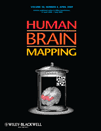Individuals with heavy prenatal alcohol exposure can experience significant deficits in cognitive and psychosocial functioning and alterations in brain structure that persist into adulthood.
In this report, data from 99 participants collected across three sites (Los Angeles and San Diego, California, and Cape Town, South Africa) were analyzed to examine relationships between brain structure, neurocognitive function, facial morphology, and maternal reports of quantities of alcohol consumption during the first trimester.
Across study sites, we found highly significant volume reductions in the FASD group for all of the brain regions evaluated.
After correcting for scan location, age, and total brain volume, these differences remained significant in some regions of the basal ganglia and diencephalon.
In alcohol-exposed subjects, we found that smaller palpebral fissures were significantly associated with reduced volumes in the ventral diencephalon bilaterally, that greater dysmorphology of the philtrum predicted smaller volumes in basal ganglia and diencephalic structures, and that lower IQ scores were associated with both smaller basal ganglia volumes and greater facial dysmorphology.
In subjects from South Africa, we found a significant negative correlation between intracranial volume and total number of drinks per week in the first trimester.
These results corroborate previous reports that prenatal alcohol exposure is particularly toxic to basal ganglia and diencephalic structures. We extend previous findings by illustrating relationships between specific measures of facial dysmorphology and the volumes of particular subcortical structures, and for the first time show that continuous measures of maternal alcohol consumption during the first trimester relates to overall brain volume reduction.
Read Full Abstract
Request Reprint E-Mail: esowell@ucla.edu
